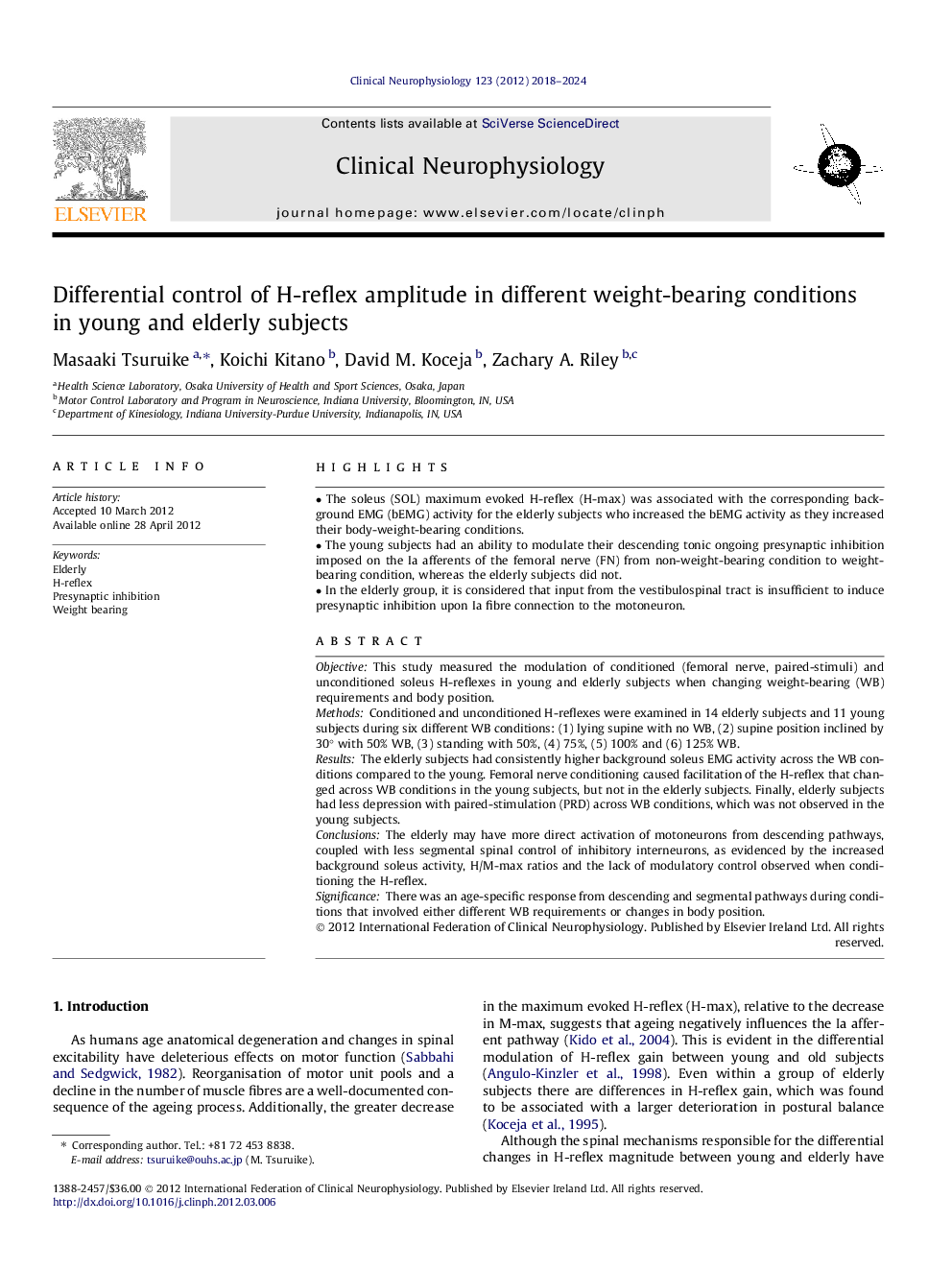| Article ID | Journal | Published Year | Pages | File Type |
|---|---|---|---|---|
| 3045385 | Clinical Neurophysiology | 2012 | 7 Pages |
ObjectiveThis study measured the modulation of conditioned (femoral nerve, paired-stimuli) and unconditioned soleus H-reflexes in young and elderly subjects when changing weight-bearing (WB) requirements and body position.MethodsConditioned and unconditioned H-reflexes were examined in 14 elderly subjects and 11 young subjects during six different WB conditions: (1) lying supine with no WB, (2) supine position inclined by 30° with 50% WB, (3) standing with 50%, (4) 75%, (5) 100% and (6) 125% WB.ResultsThe elderly subjects had consistently higher background soleus EMG activity across the WB conditions compared to the young. Femoral nerve conditioning caused facilitation of the H-reflex that changed across WB conditions in the young subjects, but not in the elderly subjects. Finally, elderly subjects had less depression with paired-stimulation (PRD) across WB conditions, which was not observed in the young subjects.ConclusionsThe elderly may have more direct activation of motoneurons from descending pathways, coupled with less segmental spinal control of inhibitory interneurons, as evidenced by the increased background soleus activity, H/M-max ratios and the lack of modulatory control observed when conditioning the H-reflex.SignificanceThere was an age-specific response from descending and segmental pathways during conditions that involved either different WB requirements or changes in body position.
► The soleus (SOL) maximum evoked H-reflex (H-max) was associated with the corresponding background EMG (bEMG) activity for the elderly subjects who increased the bEMG activity as they increased their body-weight-bearing conditions. ► The young subjects had an ability to modulate their descending tonic ongoing presynaptic inhibition imposed on the Ia afferents of the femoral nerve (FN) from non-weight-bearing condition to weight-bearing condition, whereas the elderly subjects did not. ► In the elderly group, it is considered that input from the vestibulospinal tract is insufficient to induce presynaptic inhibition upon Ia fibre connection to the motoneuron.
